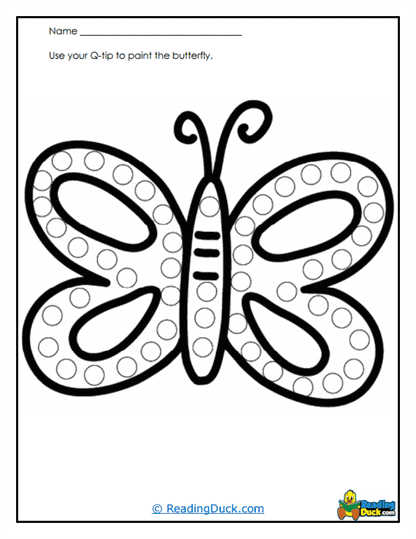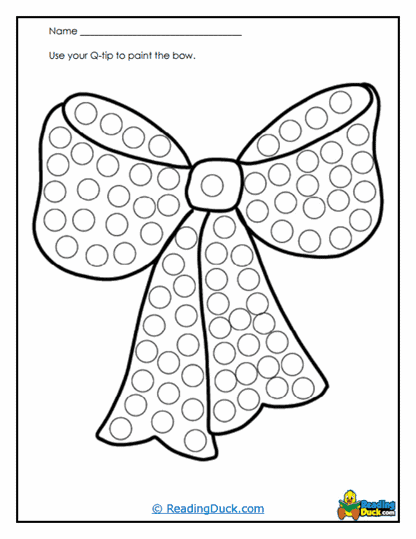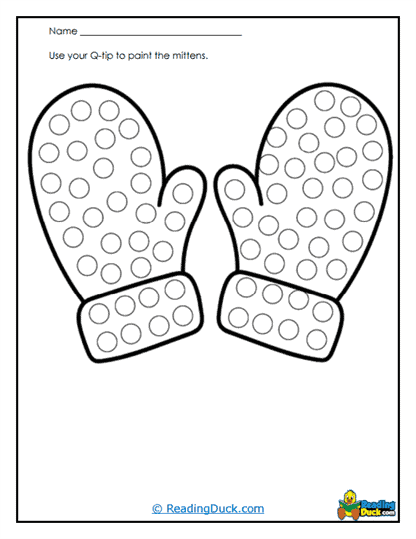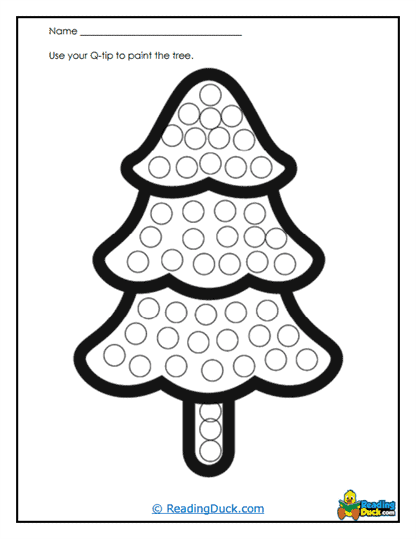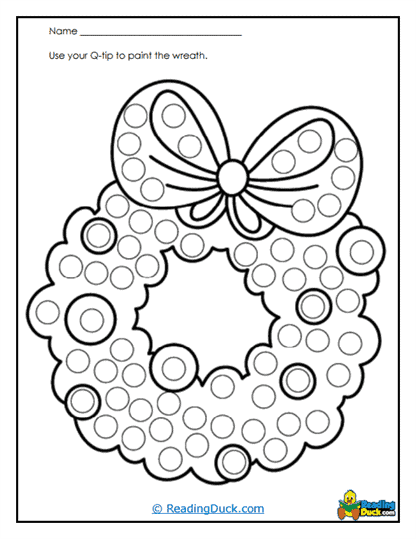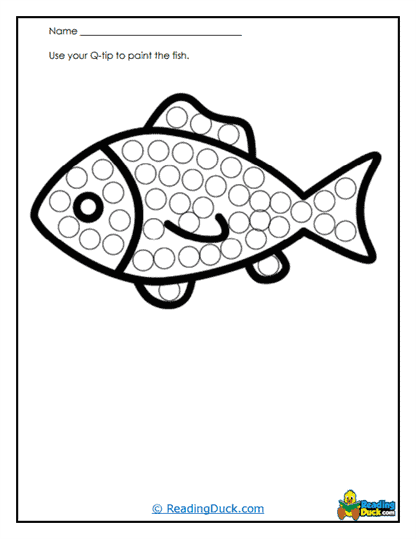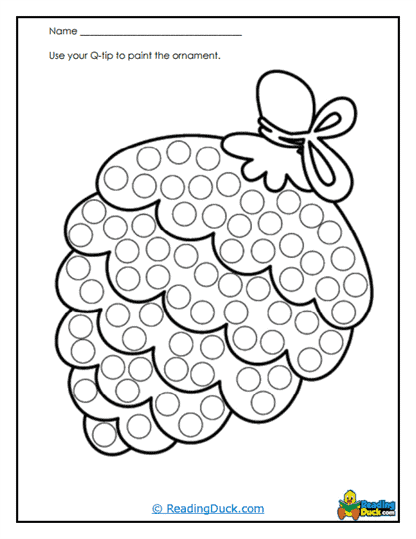Q-tip Painting Worksheets
About Our Q-tip Painting Templates
Our Q-tip Painting collection is designed to offer young learners a creative and engaging way to develop fine motor skills through the art of dot painting. This collection features a wide variety of outlined pictures, each perfectly suited for the unique technique of Q-tip painting, where children use cotton swabs (Q-tips) to apply paint in small, controlled dots.
The worksheets include a range of designs, from simple shapes to more intricate images, providing opportunities for both beginners and more advanced students to enjoy and benefit from this activity. Available in easy-to-download PDF format, these worksheets are a convenient resource for educators and parents looking to incorporate creative arts into early childhood education.
What is Q-tip Painting?
Q-tip Painting is a simple yet highly effective art technique that allows young children to explore creativity while developing essential fine motor skills. Instead of using traditional paintbrushes, children dip Q-tips into paint and apply it to the worksheet in small, precise dots, a method often referred to as dot painting. This technique is particularly beneficial for young learners as it encourages them to focus on accuracy and control while still allowing them to express their creativity.
In addition to enhancing fine motor skills, Q-tip Painting Worksheets offer several other educational benefits:
- Color Recognition: As children dip Q-tips into different paint colors and apply them to the worksheet, they learn to identify and differentiate between various colors. This activity provides a hands-on approach to color theory, helping children understand how colors work together and how they can be used creatively.
- Hand-Eye Coordination: Placing dots accurately within the outlines on the worksheet requires careful coordination between what the eyes see and how the hand moves. This practice is essential for developing the coordination needed for writing, drawing, and other precision tasks.
- Creative Expression: While the worksheets provide the outlines, children have the freedom to choose their colors and how they want to fill in the spaces. This element of choice allows for a high level of personal expression within a structured activity, making it a perfect balance of guidance and creativity.
Furthermore, Q-tip painting helps in developing focus and concentration as children need to carefully dip the Q-tip into the paint and place each dot within the outline, which encourages mindfulness and patience. These worksheets are designed to be both engaging and educational, offering a variety of activities that cater to different interests and skill levels, making them an ideal resource for enhancing multiple aspects of early childhood development.
How Q-tip Painting Enhances Fine Motor Skills
Q-tip Painting Worksheets are an excellent resource for enhancing fine motor skills, which are critical for a child’s development. Fine motor skills involve the coordination of small muscles in the hands and fingers, which are necessary for a range of activities, from writing to buttoning clothes.
When children engage in Q-tip painting, they practice:
- Grip and Dexterity: Holding a Q-tip and applying paint in small, controlled dots helps children develop the grip and hand control needed for writing and other precise tasks. The repetitive motion of dipping and dotting strengthens the muscles in their hands and fingers, preparing them for more complex fine motor tasks.
- Precision and Control: Q-tip painting requires children to place each dot carefully within the boundaries of the outlined picture, enhancing their ability to control hand movements with precision. This practice is crucial for tasks that require accuracy, such as writing letters or cutting along a line.
- Bilateral Coordination: Using one hand to dip the Q-tip in paint while the other hand stabilizes the paper helps children develop bilateral coordination, which is important for activities that require the use of both hands, such as tying shoes or playing musical instruments.
These worksheets provide a structured yet creative way for children to practice these skills, making fine motor development an enjoyable and rewarding experience.
The Role of Q-tip Painting in Sensory Development
Q-tip Painting Worksheets also play a significant role in sensory development, offering children a multi-sensory experience that engages both their tactile and visual senses. Sensory development is crucial in early childhood as it helps children process and respond to the world around them.
- Tactile Stimulation: The act of holding a Q-tip and dipping it into paint provides children with tactile feedback, helping them to develop a better understanding of texture and resistance. This hands-on experience is particularly beneficial for children who may need additional sensory input to help regulate their responses to different stimuli.
- Visual Processing: As children focus on placing dots within the outlines, they enhance their visual processing skills. This involves interpreting visual information and translating it into motor actions, a process that is fundamental for tasks such as reading and navigating their environment.
- Calming Effects: The repetitive motion of dot painting can have a calming effect on children, making it an excellent activity for those who may need help with self-regulation. The focus required to place each dot can help children tune out distractions and concentrate on the task at hand, promoting mindfulness and reducing stress.
By engaging multiple senses, Q-tip Painting Worksheets support holistic development in children, helping them to integrate sensory experiences with cognitive and motor skills.
Incorporating Q-tip Painting into Thematic Units
Q-tip Painting Worksheets can be easily integrated into various thematic units, adding a creative and hands-on component to broader educational themes. These worksheets can be used to reinforce concepts in subjects like science, social studies, and literacy while allowing children to express their creativity.
Some ideas for thematic integration include:
- Seasons: Use Q-tip painting to explore the changing seasons by having children paint scenes like autumn leaves, winter snowflakes, or spring flowers. This not only reinforces the concept of seasons but also provides a sensory-rich way to engage with the theme.
- Animals: During a unit on animals, children can use Q-tip painting to color in pictures of different animals. This activity can be paired with lessons about habitats, animal behaviors, and the environment, making the learning experience more interactive and memorable.
- Holidays and Celebrations: Q-tip painting can also be used to create festive decorations for holidays and celebrations. For example, children can paint Easter eggs, Christmas ornaments, or Halloween pumpkins, tying in cultural learning with artistic expression.
Incorporating Q-tip painting into thematic units not only makes learning more engaging but also helps children see the connections between different subjects, deepening their understanding and making the educational experience more cohesive.
In summary, our Q-tip Painting Worksheets collection is a versatile and engaging resource that supports the development of fine motor skills, sensory processing, and creative expression in young learners. These worksheets offer children a fun and educational way to practice the art of dot painting while also building the foundational skills necessary for academic success.
By incorporating these worksheets into your teaching, you are providing your students with a comprehensive learning experience that supports their growth in multiple areas. Whether used as part of a thematic unit or as a standalone activity, Q-tip Painting Worksheets are a valuable tool for early childhood education. They not only enhance motor skills and sensory development but also encourage creativity and self-expression, making them an essential resource in any early learning environment.
